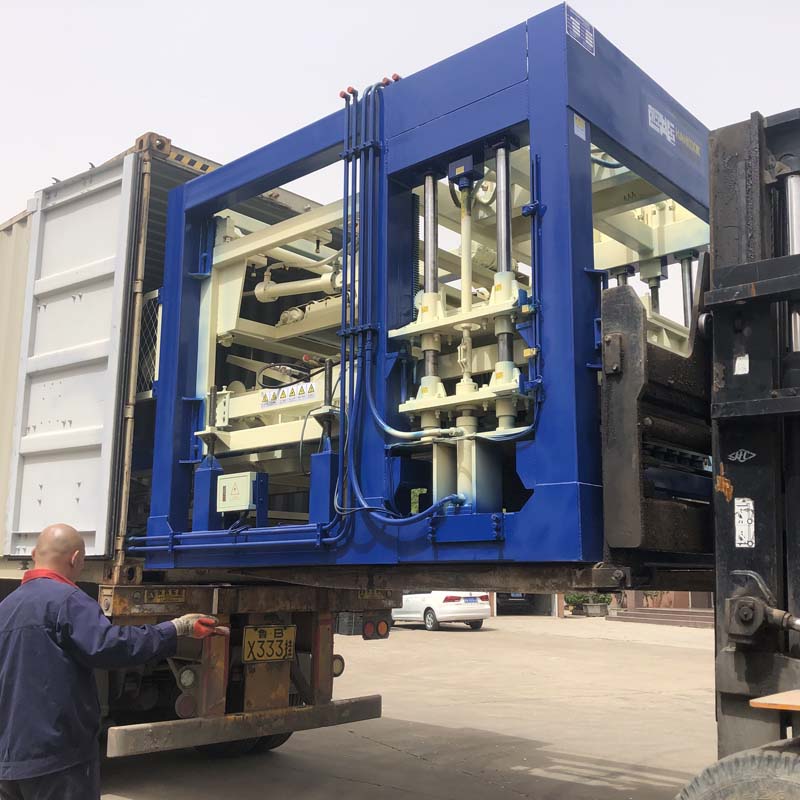
Image source :Aiweiblockmachine
Maintaining full-automatic block making machines is crucial for ensuring consistent performance, maximizing operational efficiency, and prolonging the lifespan of the equipment. Proper maintenance strategies can help prevent breakdowns, reduce downtime, and optimize the overall productivity of the manufacturing process. Here are key maintenance strategies for full-automatic block making machines:
### 1. **Regular Inspections:**
– **Daily Visual Checks:**
Conduct visual inspections of the entire machine on a daily basis. Check for loose bolts, damaged components, and any signs of wear. Address any issues promptly to prevent them from escalating.
– **Inspect Wear Parts:**
Regularly inspect wear parts such as molds, compaction systems, and conveyor belts. Replace or repair any components that show signs of wear to maintain optimal performance and block quality.
### 2. **Lubrication:**
– **Scheduled Lubrication:**
Follow a routine lubrication schedule as recommended by the machine manufacturer. Lubricate moving parts, bearings, and other critical components to reduce friction, prevent wear, and ensure smooth operation.
– **Use Appropriate Lubricants:**
Use the lubricants specified by the machine manufacturer. Different components may require different types of lubrication, so it’s important to follow the guidelines provided in the machine’s maintenance manual.
### 3. **Cleaning and Dust Control:**
– **Regular Cleaning:**
Clean the machine regularly to remove dust, debris, and concrete residue. Buildup of material can affect the machine’s performance and lead to unnecessary wear on components.
– **Dust Control Measures:**
Implement dust control measures to protect electronic components and prevent dust from entering sensitive areas of the machine. Dust buildup can impair the functionality of sensors and other critical parts.
### 4. **Alignment and Calibration:**
– **Check Alignment:**
Ensure that all components are properly aligned. Misalignment can lead to uneven wear, decreased block quality, and increased stress on the machine’s structure.
– **Calibration of Sensors and Systems:**
Calibrate sensors, control systems, and other electronic components regularly. Proper calibration is essential for accurate measurements, precise control, and consistent block production.
### 5. **Predictive Maintenance:**
– **Monitoring and Data Analysis:**
Implement predictive maintenance by monitoring the machine’s performance through sensors and collecting relevant data. Analyze this data to identify patterns and trends that may indicate potential issues.
– **Condition-Based Maintenance:**
Base maintenance activities on the actual condition of the machine rather than a fixed schedule. This approach allows for timely intervention when specific components show signs of wear or degradation.
### 6. **Employee Training:**
– **Operator Training:**
Provide comprehensive training for machine operators. Well-trained operators are more likely to detect early signs of issues, operate the machine efficiently, and follow proper maintenance procedures.
– **Maintenance Personnel Training:**
Ensure that maintenance personnel are trained to troubleshoot, diagnose problems, and perform routine maintenance tasks. Having a skilled maintenance team is essential for effective and timely repairs.
### 7. **Documentation and Record Keeping:**
– **Maintenance Logs:**
Maintain detailed records of all maintenance activities, including inspections, repairs, and replacements. This documentation provides a historical perspective on the machine’s performance and aids in future maintenance planning.
– **Manufacturer Guidelines:**
Follow the manufacturer’s maintenance guidelines and recommendations outlined in the machine’s manual. Manufacturers often provide specific instructions for maintaining their equipment, and adherence to these guidelines is essential for warranty compliance.
### 8. **Emergency Preparedness:**
– **Spare Parts Inventory:**
Maintain an inventory of critical spare parts to minimize downtime in case of unexpected failures. Having essential components readily available can expedite the repair process.
– **Emergency Response Plan:**
Develop an emergency response plan that includes procedures for addressing unexpected breakdowns. This plan should outline the steps to be taken to minimize downtime and ensure a swift recovery.
### Conclusion:
Effective maintenance strategies for full-automatic block making machines encompass a combination of routine inspections, proactive measures, and a well-trained workforce. By prioritizing regular maintenance, manufacturers can optimize the performance of their machines, reduce operational costs, and contribute to the production of high-quality blocks in a consistent and efficient manner.
